We were lucky to catch up with Erin Clancy recently and have shared our conversation below.
Erin, looking forward to hearing all of your stories today. Can you share an important lesson you learned in a prior job that’s helped you in your career afterwards?
I recently attended the Women Working With Clay Symposium, where artists and makers from all stages of their careers came together. One of the most memorable parts of the event was the live artist demonstrations. While these sessions often began with technical questions – about form, tools, and technique – they quickly shifted into more philosophical territory: When do we start calling ourselves artists? What does it mean to “make it”? Are there clear steps to becoming successful?
Like many people, I’ve searched for clear containers to define myself – or to be understood by others. I’ve looked for roadmaps, hoping they might lead me toward the “right” next step. But trying to align nonlinear experiences with linear expectations often created tension. It’s something I’ve felt both as a ceramic artist and as someone running a small creative business.
During one of the demonstrations, an artist responded simply: “You will always be an artist. Your life is your artistic practice.” That line stayed with me. It reminded me that every experience along the way – whether inside the studio or beyond it – has mattered. Each part of the path informs the next.
Alongside building my ceramics studio in Queens, New York I’ve always worked in hospitality, primarily front-of-house. That work taught me how to navigate systems, support coworkers, and connect with a wide range of people, often in fast-paced, high-pressure environments. The skills I developed in restaurants – communicating clearly, managing expectations, multitasking with care – are the same ones I bring into the studio, especially when collaborating with clients on custom ceramics and restaurant dinnerware projects.
Folks with restaurant backgrounds are often told their skills don’t translate into other industries. I would argue the opposite. Hospitality work demands intelligence, adaptability, and emotional awareness – qualities that continue to shape how I move through the world and run my ceramic practice.
I hope I can continue to resist the urge to fit into a fixed definition and instead trust the layers of experience I’ve built over time. I aim to foster a studio – and a creative life -that reflects those values: one rooted in collaboration, craft, and care.
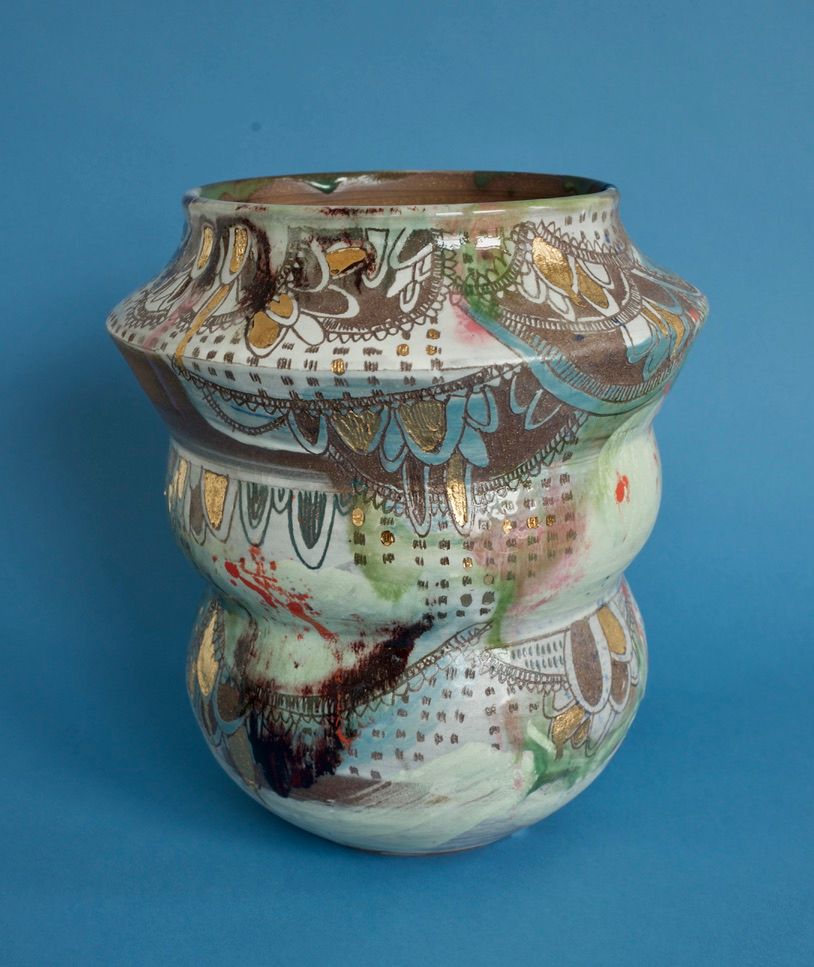
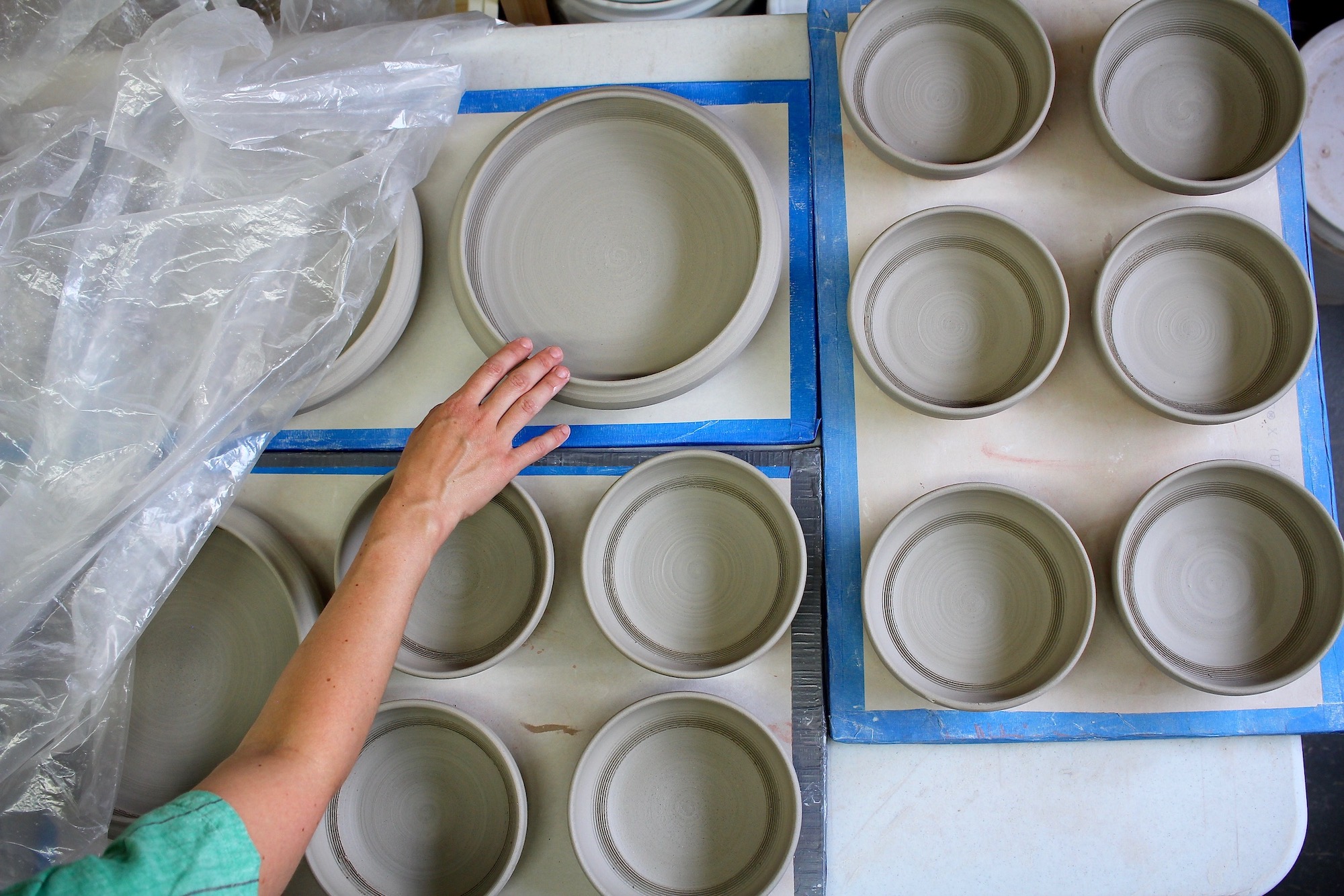
Awesome – so before we get into the rest of our questions, can you briefly introduce yourself to our readers.
My name is Erin Louise Clancy, and I’m a ceramic artist living and working in Ridgewood, Queens, New York. I run a one-person studio focused on wheel-thrown functional stoneware – cups, bowls, plates, and serving pieces – designed for daily use. Each piece is made by hand, start to finish, with an emphasis on utility and form.
While my background is in printmaking and ceramics, I’ve also spent over two decades working in restaurants across New York City and the Pacific Northwest. That experience continues to shape how I work – both in the studio and in collaboration with clients. I know what it feels like to run food, bus tables, and see firsthand what happens to dishes in the bus tub. Those insights directly inform how I design my ceramics.
I transitioned from visual art to functional ceramics after the sudden death of my father and during a period of immense grief. Clay became a grounding medium – and a point of connection through collaboration. Over the last ten years, I’ve built a steady base of clients, including restaurants, cafés, and shops throughout NYC and across the country. Projects have ranged from branded mugs and custom planters to limited-edition tableware collections and full dinnerware lines for hospitality groups. My work has been featured in The New Yorker and Eater, as well as in cookbooks and juried exhibitions.
What sets my studio apart is the combination of hands-on craft and hospitality-minded problem solving. Everything is currently made to order, meaning each commission can be tailored to a client’s specific needs and vision. Every piece is made to be used. I care deeply about process, relationships, and creating ceramics that hold up – especially in restaurant and home settings. I’m not interested in mass production or scaling beyond my involvement.
The studio has grown slowly and steadily through long-term collaborations and word of mouth. Looking ahead, I’m developing a collection of handmade tableware forms, refined through years of client feedback, that will soon be available for pre-order through my online ceramics shop. I’m excited to make the work more accessible to individuals who want to bring handmade objects into daily life.
I hope the work invites curiosity—about how things are made, and the role handmade ceramics can play in everyday experience.
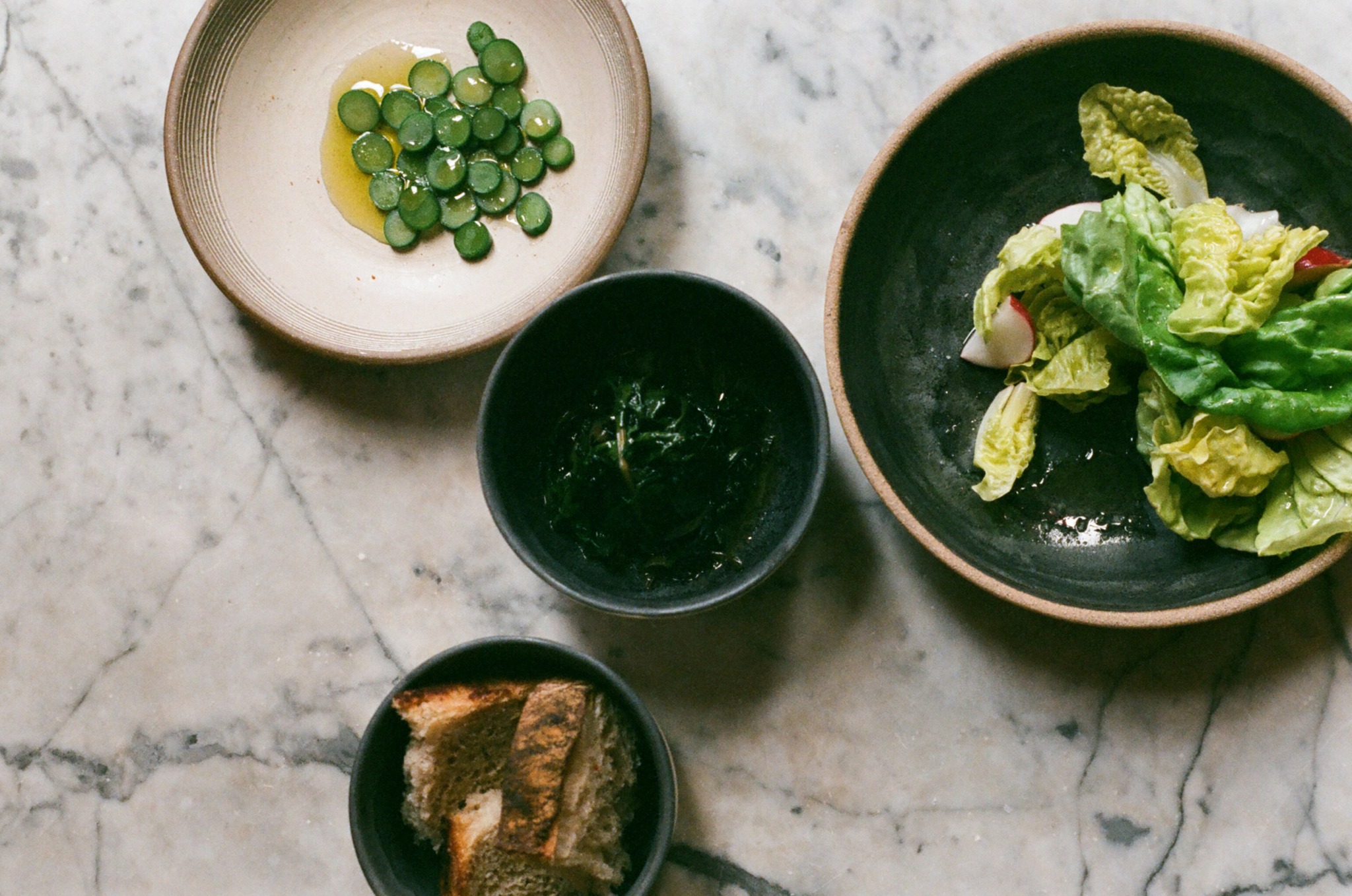
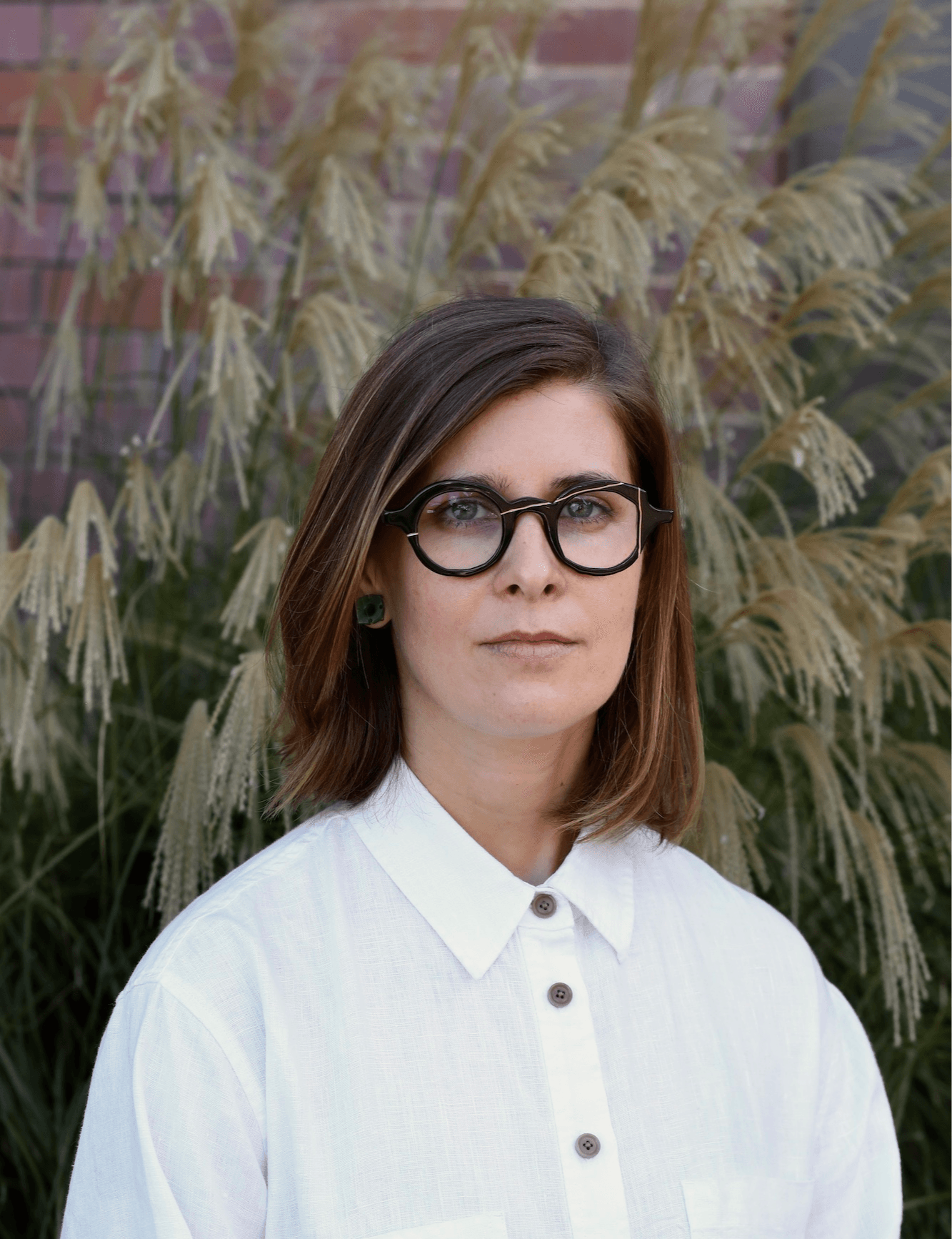
Are there any resources you wish you knew about earlier in your creative journey?
Yes, absolutely. I wish there had been more emphasis, or even just an accessible entry point, on business practices for artists during my formal education. While I understand that business and creative work can often feel at odds, especially in academic settings, they aren’t mutually exclusive. It’s taken me years to feel comfortable advocating for my professional needs and to fully recognize the value of my creative labor.
For artists and creative entrepreneurs in New York or California, I highly recommend Start Small Think Big (www.startsmallthinkbig.org) – a nonprofit that provides free legal and financial support for small business owners. Through their workshops and volunteer network, I was able to establish my LLC, register a trademark for my logo, draft commercial contracts, and review my website’s terms of use. It was an empowering experience that gave me the supportive structure I needed to build a more sustainable ceramics business practice.
I also recently took a free class through Evergreen Exchange (evergreenexchange.org) with Holly Howard (askhollyhow.com), who offers consulting, workshops, and resources specifically tailored to creative business owners. Holly’s approach is both practical and values-driven, and her website is a great starting point for artists looking to gain clarity and confidence in how they run their businesses.
While it’s not a formal resource, I also encourage anyone starting out to be scrappy – reach out to other artists or small business owners, ask questions, show up, and stay curious. People are often incredibly generous with their time and willing to share what they’ve learned. That kind of peer connection and transparency has been just as essential to me as any structured program or class.
Finally, and I know this might sound cliché, but failure can be one of the most valuable resources you have. The uncomfortable moments of growth, or the times when things don’t go as planned, offer real-time feedback and an opportunity to re-calibrate.
My friend Morgan Evans of Business Casual (www.thisisbusinesscasual.com) is an excellent resource when it comes to giving and receiving feedback, as well as thinking through sustainable systems and organizational health for creative businesses. I’ve learned so much through their workshops, and highly recommend their work to artists or business owners looking to build something long-term.
If you can recognize that setbacks are inevitable – and use those moments to gain insight into what’s working (and what isn’t) – you’ll be able to build more resilient and adaptive studio practices over time.
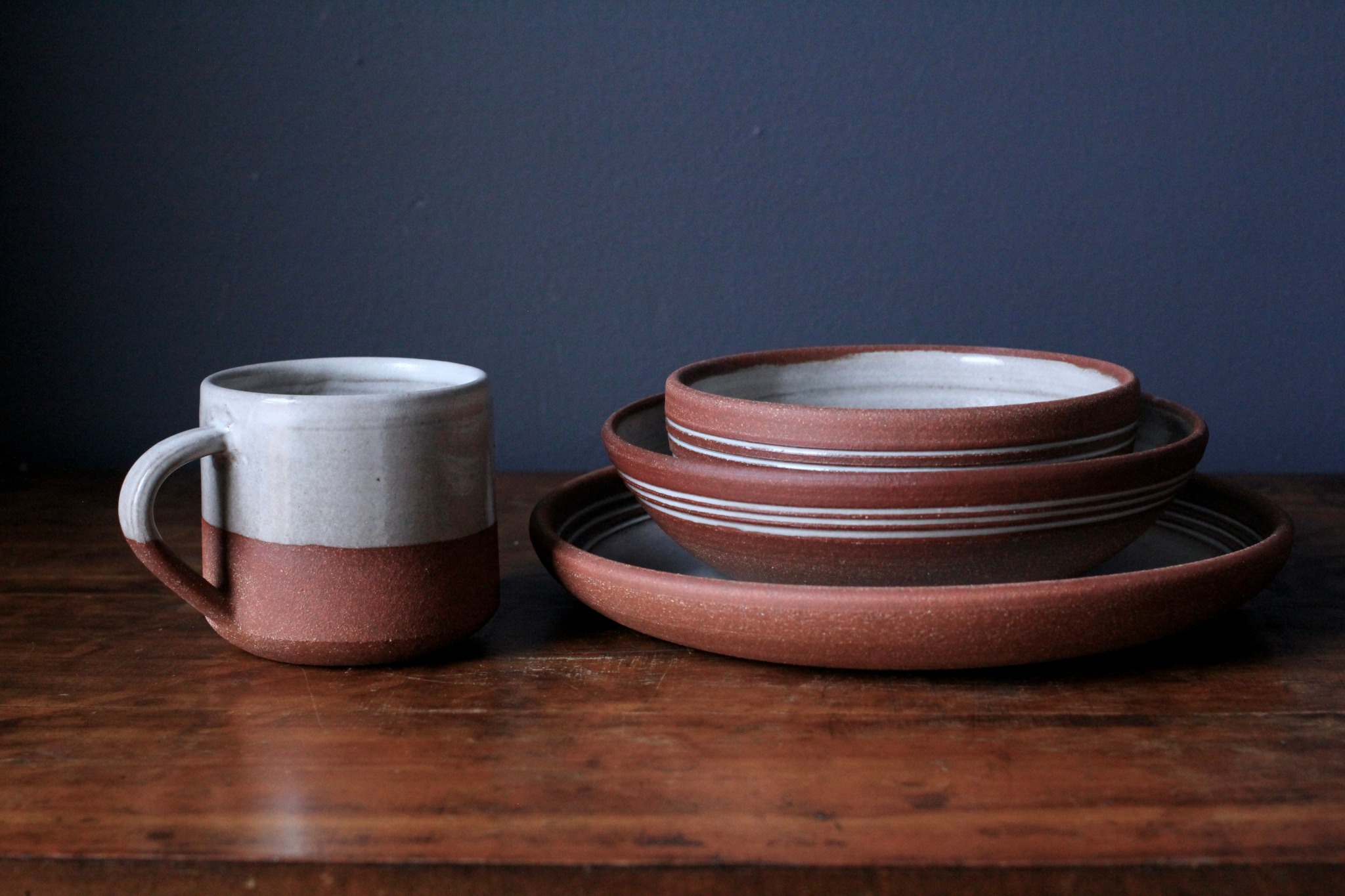
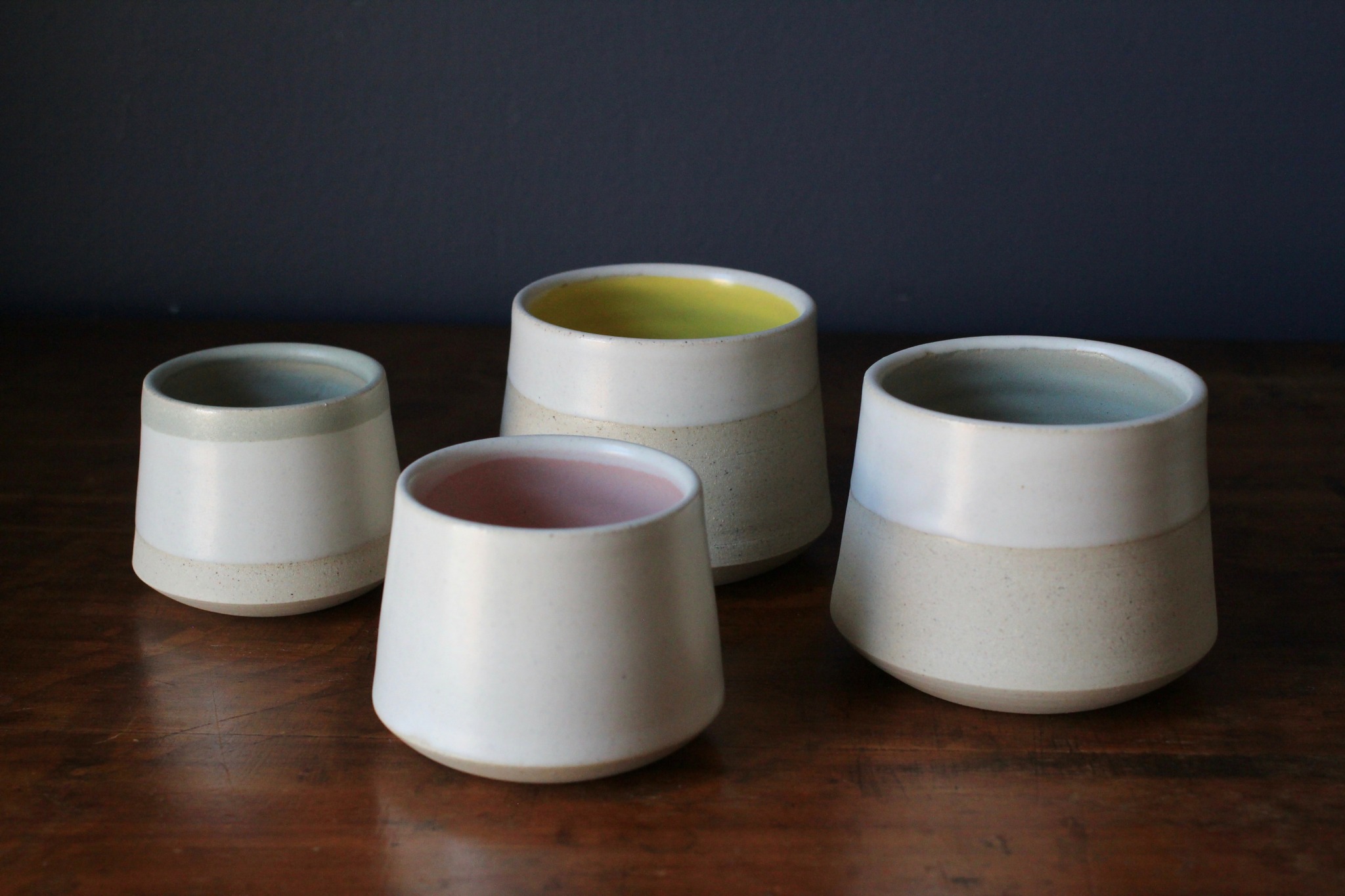
What’s worked well for you in terms of a source for new clients?
Word-of-mouth has consistently been the most reliable source of new clients for my ceramics studio. While that kind of growth tends to be slower, it’s also more intentional. Most of the people who reach out have already seen my work in use -whether in a restaurant, café, or retail space – and often come in with a baseline understanding of the process and care involved. Many are specifically seeking custom handmade ceramics from a small, artist-run studio.
I deeply value these direct referrals, especially when they lead to opportunities for larger-scale collaborations, like working with hospitality groups or chefs on restaurant dinnerware. But just as important as receiving a referral is what you do with it. When a new commission client expresses interest in my work, I make it a priority to meet in person whenever possible—especially with NYC-based clients. We sit down, look at samples, talk through their vision, and discuss the details of the handmade process. That level of communication is essential when you’re creating work that takes time, resources, and collaboration.
Throughout the process, I try my best to keep clients updated with progress reports and timelines. For local deliveries in New York City, I personally deliver the work. I want clients to feel connected to the process – not just receive a box of ceramics at their door. The goal is to make the experience as thoughtful and human as the objects themselves.
That said, I’m now at a point where I’d like to expand the studio’s visibility and connect with a broader audience. I’ve always preferred in-person relationships, but I’m challenging myself to build a more consistent digital presence. That includes growing my online ceramics shop, offering pre-orders for handmade tableware, and sharing more about my process through writing, images, and events.
I also organize collaborative events each year with artists from other disciplines. These gatherings are another way to bring people into the work—literally. Seeing and holding the pieces in person creates a deeper kind of connection, which is ultimately what I care most about.
Contact Info:
- Website: https://www.erinlouiseclancy.com/
- Instagram: @erinlouiseclancy
- Other: pinterest: erinlouiseclancystudio
https://www.pinterest.com/erinlouiseclancystudio/

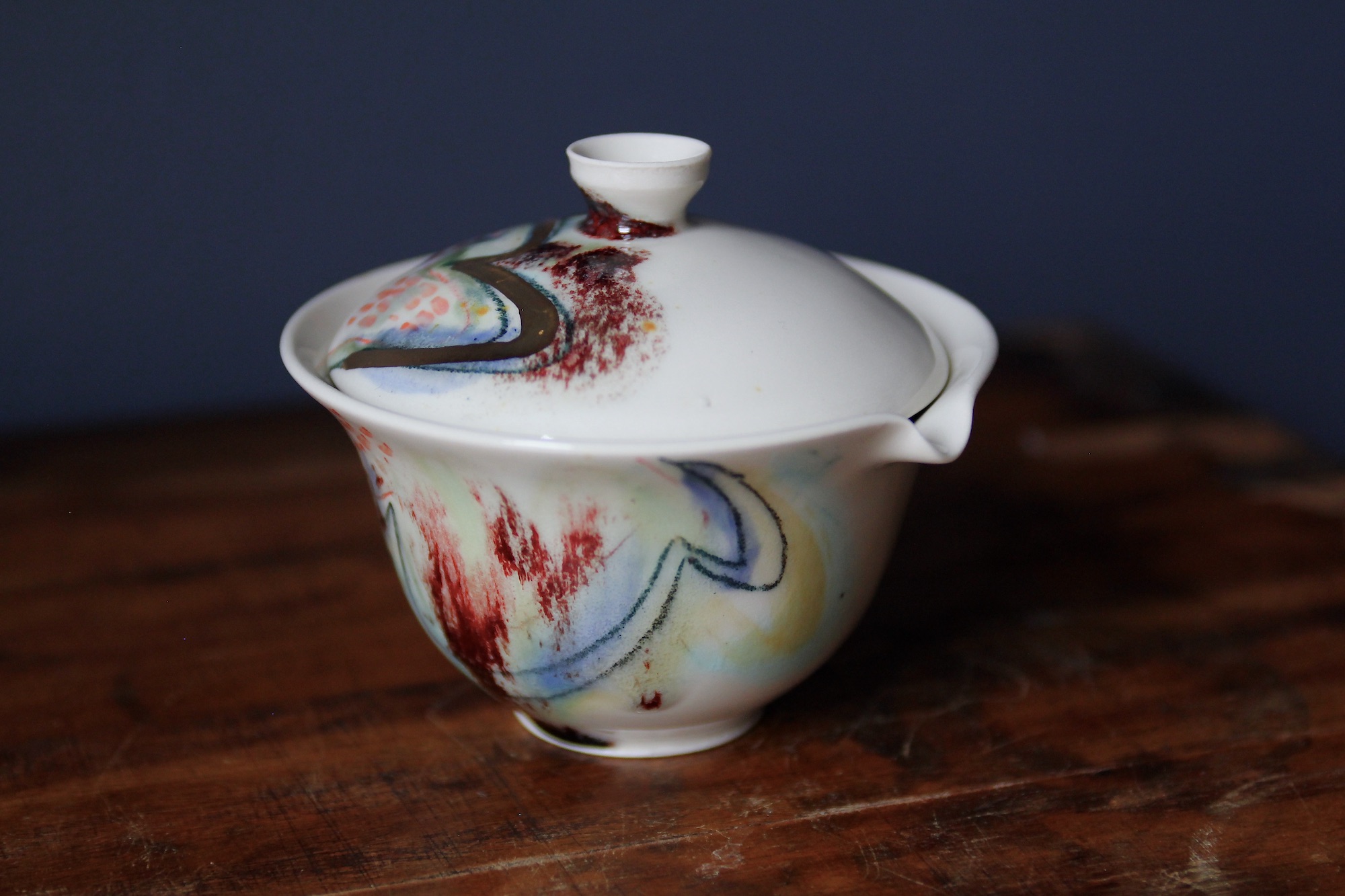
Image Credits
Sammy Tunis
Olivia Crumm


